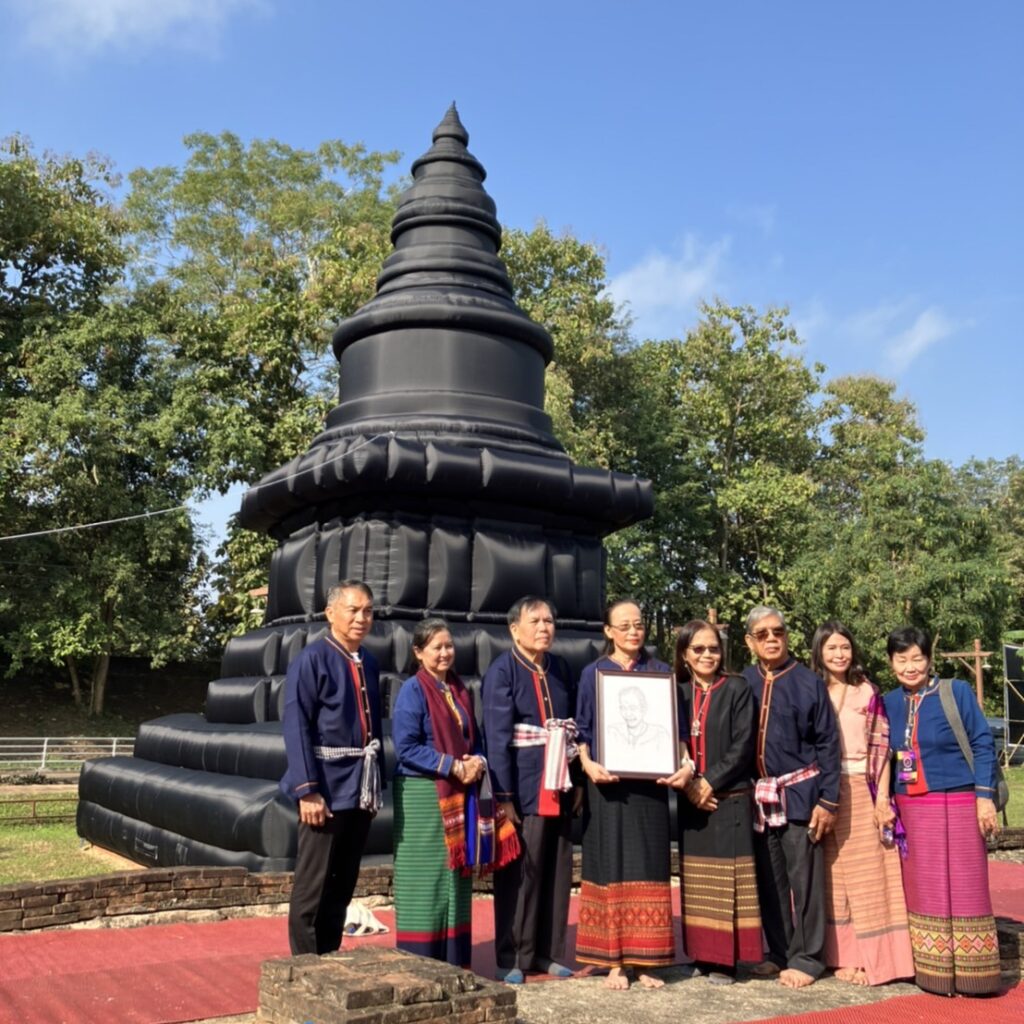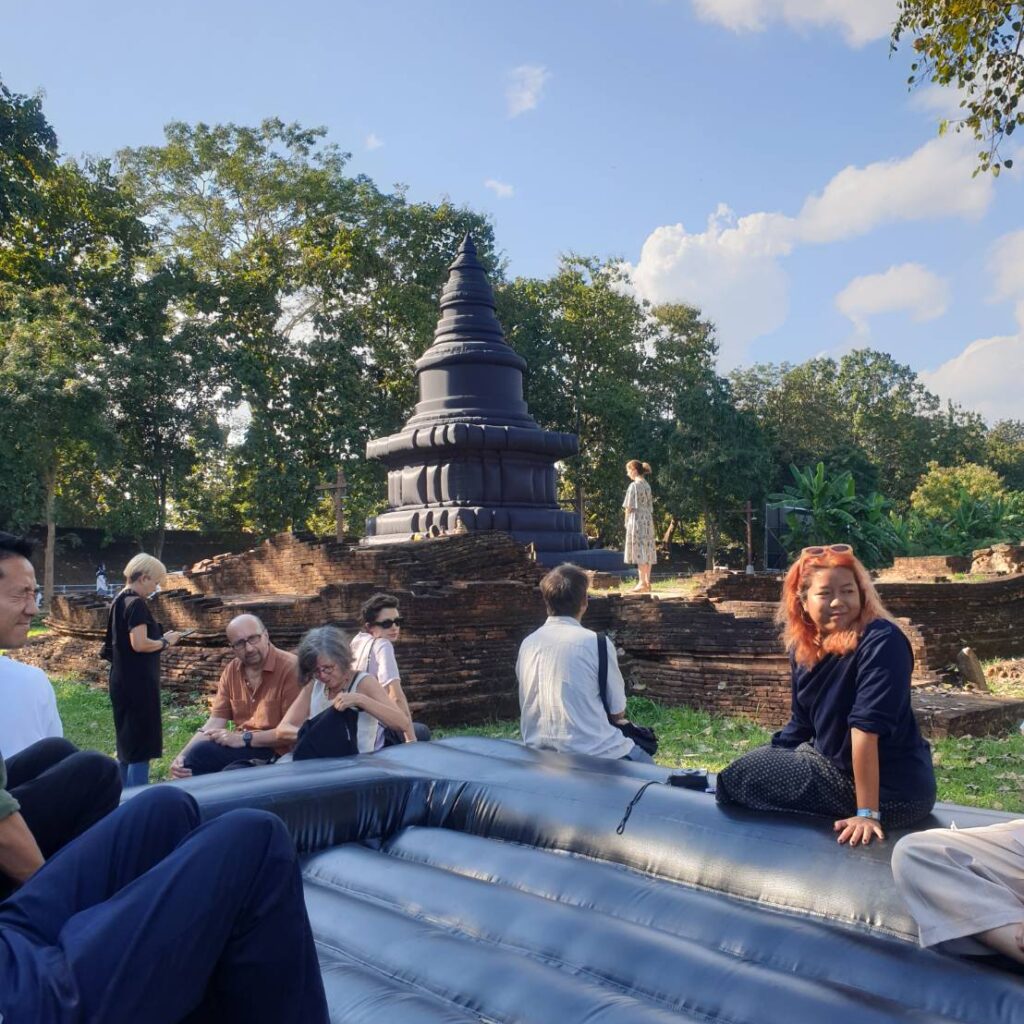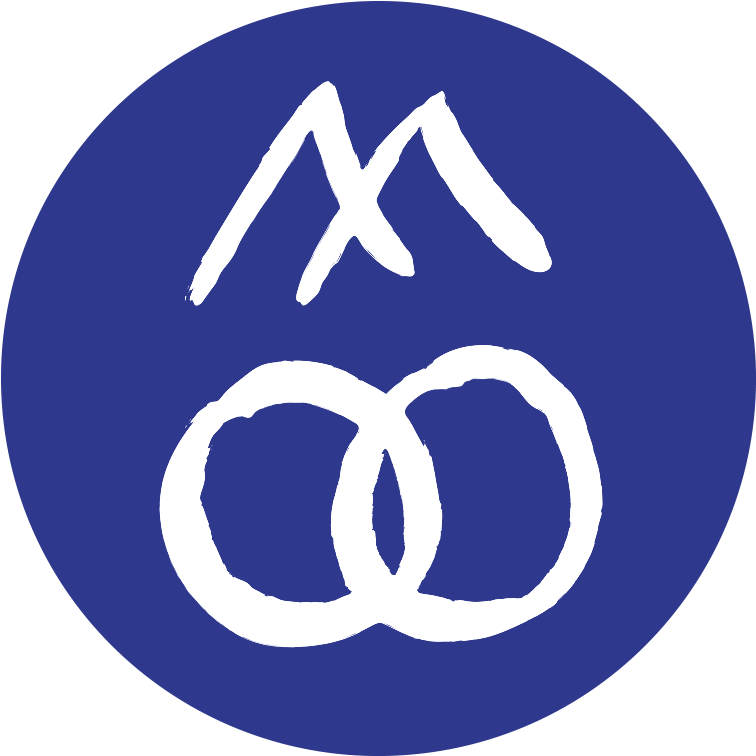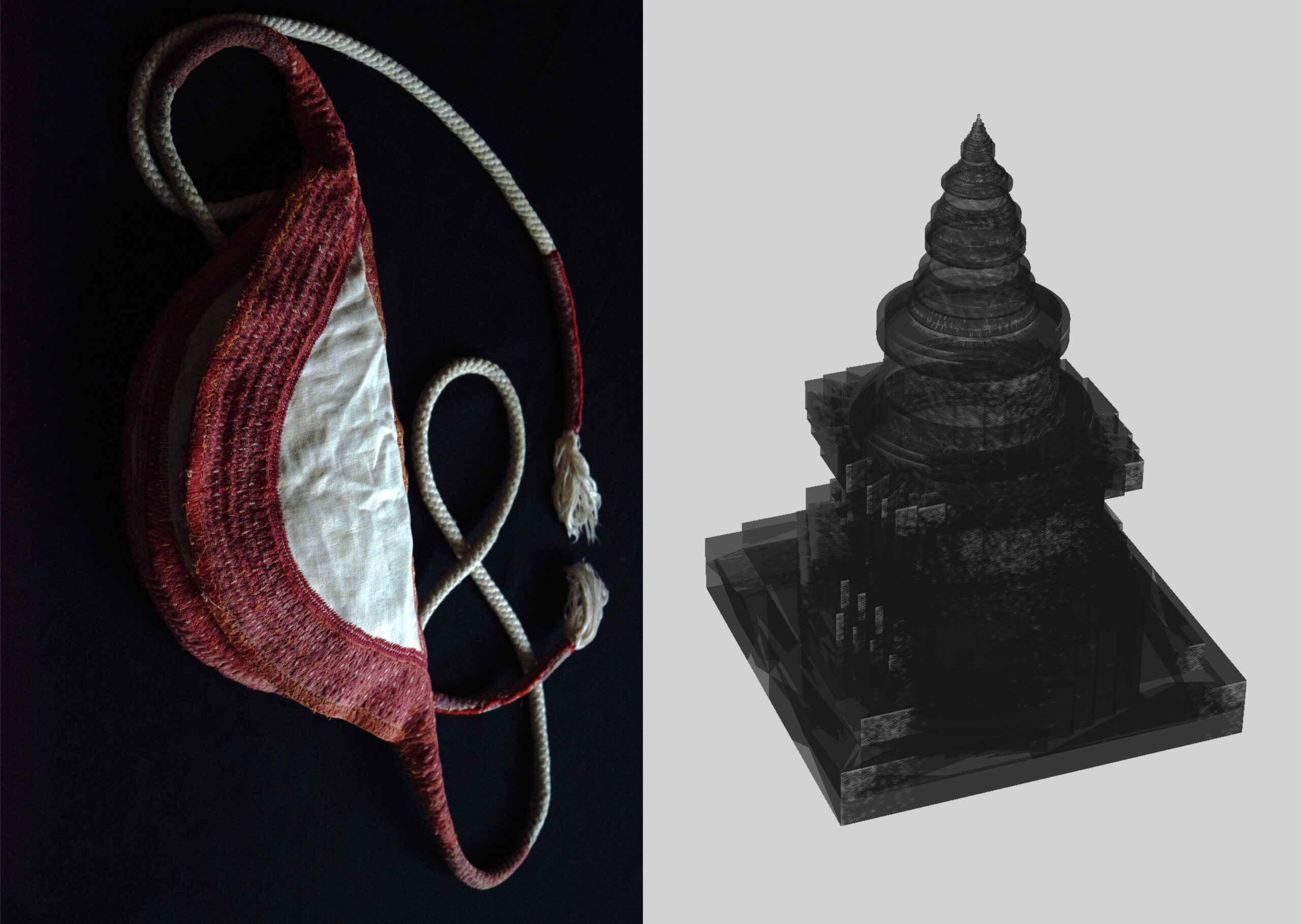Baan Noorg Collaborative Arts and Culture was invited to contribute to the third edition of the Thailand Biennale (Chiang Rai, December 9th, 2023 – April 30th, 2024). This edition is titled “The Open World” which refers to the omonymous Buddha posture and to a general aspiration of the event: to ‘open up’ people’s perceptions of art with references to local art history from the 13th century to the present, and to engage with contemporary global issues.
Baan Noorg’s contribution to this Thailand Biennale is a project titled ‘Methodology for a Tai Yuan Return: on Transmission and Inheritance”. The project speculates on a return of the Tai Yuan diaspora in Nong Pho and other regions to the city of Chiang Saen (an old city nearby Chiang Rai), from where it was forced to flee in 1804.
Chiang Saen, originally a kingdom of its own, came under the influence of the kingdom of Chiang Mai and it was colonised by the Burmese army in 1558. In 1804, it was conquered and destroyed by a coalition of troops including the Siamese Army. The local population (which called themselves Tai Yuan) was forced to evacuate the area and divided into groups. While most of them stayed in the north (kingdom of Lanna and neighbouring areas of present Laos), one was entrusted to the kingdom of Siam and emigrated southwards together with its army. The group spread between the provinces of Saraburi and Ratchaburi, and settled in many villages, including Nong Pho (Photharam district). The Tai Yuan immigrants were farmers and they were the first group to cultivate the area. They had their unique language and culture which is different from that of Thai (at that time Siamese) people. ‘Tai Yuan’ refers to the language of the Tai-Kadai ethnic group. It implies being otherwise, an outsider, and it was used by the population to distinguish themselves from other ethnic groups, such as the Siamese and the Burmese.
Nowadays, there are only a few people left (mostly elderly) in the village of Nong Pho who can speak Tai Yuan and are familiar with this historical and cultural heritage. The project ‘Methodology for a Tai Yuan Return’ enquires about this history and aims at making it visible through an extensive program in Nong Pho and Chiang Saen. It is a participatory contemporary art project reflects on identity models as phenomena in a constant state of becoming through reproduction and reconstruction. The return of the Tai Yuan diaspora to Chiang Saen is a mere speculation but it nevertheless demonstrates tangible efforts to symbolically, geographically and historically (re)connect to the city. The project is created in collaboration with the Tai-Yuan diaspora through representatives of the Tai-Yuan Association of Thailand.
In Nong Pho, Baan Noorg is running its fourth Biennial. This edition spreads and leaves concrete traces around the village through murals. These works were commissioned and realised by local and international artists who took part in the Baan Noorg Artist-In-Residence program and/or are part of its artistic ecosystem. Read more about the Biennial here [link to the page]
For Chiang Saen, Baan Noorg is creating an installation with a mediation and educational program. The installation will be hosted by the Ancient Monument No.16, an archaeological site situated in the southwest of the city of Chiang Saen.

Taiyuan ethnic on murals ชาวไทยวน ภาพเขียนจิตรกรรมฝาพนัง 
Taiyuan ethnic people documented by Carl ภาพชาวไทยวน บันทึกโดย Carl Alfred Bock 
Taiyuan ethnic ภาพวาดชาวไทยวน 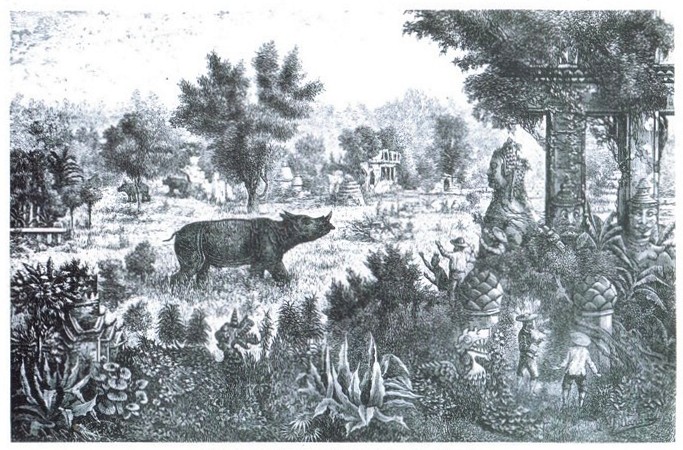
Chiangsaen was abandoned for 60 years ภาพพื้นที่เมืองเชียงแสนหลังถูกทิ้งร้างไปเป็นเวลากว่า 60 ปี บันทึกโดยLouis Delaporte
This participatory contemporary art project: Tai Yuan Return explores the practice of Re-construct, is a model of ethnic identity, within the framework of unequal power relations under the nation-state. The project raises questions and explores the possibilities regarding the transmission and inheritance of a sense of genetic connection from one generation to the next. Baan Noorg Collaborative Arts and Culture examines the social phenomenon of the Tai Yuan Diaspora Ontology. Focuses on the Tai Yuan community area in Nong Pho Sub-district, Ratchaburi, and the Tai Yuan settlement area in Chiang Saen as a case study. These areas have similarities and differences, such as the state of exile and the disappearance of being Tai Yuan. Including attempts to express the identity that remains concealed beneath the current of repressed Thai values.
Towards the collaborative initiative, Baan Noorg Collaborative Arts and Culture invites representatives of the Taiyuan Society of Thailand from various provinces, along with the audiences to create the drive in becoming an active identity as well as creation of a process of multiple identification. The project speculates on a return of the Tai Yuan diaspora in Nong Pho and other regions to the city of Chiang Saen, an ancient city near Chiang Rai, from where its inhabitants were forced to flee in 1804. By creating collective memory within society through materiality, considering the overlapping geographic and historical areas. This is a layer of sediment accumulated over generations, fostering meaning and relationships among the Tai Yuan people in the diaspora. The place where the return of the diaspora is a mere speculation but it nevertheless demonstrates tangible efforts to (re)connect with their origins, taking on the role of a visitor.
The project includes a religious ceremony to chant the requiem for the ancestors of Tai Yuan. Through this process, we seek to establish a connection between our present selves and those who have passed away, rooted in human belief in unseen entities. Performing this religious ceremony is therefore not merely an expression of respect for one’s ancestors, but also a platform for creating collective memories and the Taiyuan Society of Thailand gathering. It provides an opportunity for the representative members to engage together in merit-making for the deceased Tai Yuan individuals. Additionally, this ceremony holds symbolic meaning as it allows us to return to our geographic area and reconnect with the original historical community.
Ritual Ceremony and Talk Session
Venue: Ancient Monument No.16, Wiang sub-district, Chiang Saen district, Chiang Rai
Date: 14 December 2023
09:00 – 10:00: Funeral shroud chant ceremony of Dr. Udom Somporn, the deceased Tai Yuan scholar, former president of the Taiyuan Society of Thailand. Carrying his heirloom-belonging to the ceremony by Mali Somporn (spouse)
Information: Funeral shroud chant ceremony (religious ceremony), in cooperation with the Taiyuan Society of Thailand from 10 provinces. The ceremony includes chanting requiem to dedicate merit to the deceased Tai Yuan ancestors by 6 monks, followed by offering a sermon.
13:00 – 15:00: Tai Yuan Return Talk “Ethnics and Diaspora”
Information: “Ethnics and Diaspora” roundtable talk session by representatives of the Taiyuan Society of Thailand and scholars, namely Sorayut Aiemueayut, anthropologist, Boonsong Chuajetton and Supan Thasan, representatives of Chiang Saen scholars, moderate by Jiradej Meemalai (representative of Baan Noorg Collaborative Arts and Culture)
Speakers:
- Sorayut Aiemueayut, PhD Candidate, Lecturer of Department of Media Arts and Design, Faculty of Fine Arts, Chiang Mai University
- Boonsong Chuajetton, Vice President of the Taiyuan Society of Thailand, Scholar of Cultural and Local Wisdom of Chiang Saen, Principal of Municipality Elderly School, Wiang sub-district, Chiang Saen
- Supan Thasan, Civil Works Technician of Conservation and Restoration of Chiang Saen District
- Jiradej Meemalai (Moderator), Artist and Curator, Baan Noorg Collaborative Arts and Culture
“Baan Noorg Collaborative Arts and Culture operates in Nongpho district of Ratchaburi. They collaborate with both local and international communities and artists. Their work addresses various social issues such as ethnic history and displacement, through installation art that encourages public participation. For instance, this piece addresses the displacement of Yuan people in Nongpho district who migrated from Chiang Saen in the 19th century. The ancestors of the Yuan people were forcibly relocated after the armies of Siam and Chiang Mai successfully liberated Chiang Saen from the Burmese control. This artist collective endeavors to trace the Tai-Yuan heritage by reimagining their past and expressing it through an outdoor installation in an abandoned temple. The work includes two inflatable architectural sets, featuring a replica of a stupa and a temple hall base. These symbolize the act of bringing to life an object that embodies the transient, continuously emerging, and disappearing nature.”
Gridthiya Gaweewong (Co-Artistic Director with Rirkrit Tiravanija, Thailand Biennale Chiangrai)
The completed work was a multimedia installation included inflatable air stupa 800x800x1200 cm., inflatable air cubicle-base 440x630x600 cm., air blower, timer, condenser microphone, pre microphone, pre amplifier, sound, 2 speakers, lightings, Jok woven fabric waist bag from Tai-Yuan deceased ancestor, requiem ceremony, roundtable talk session
